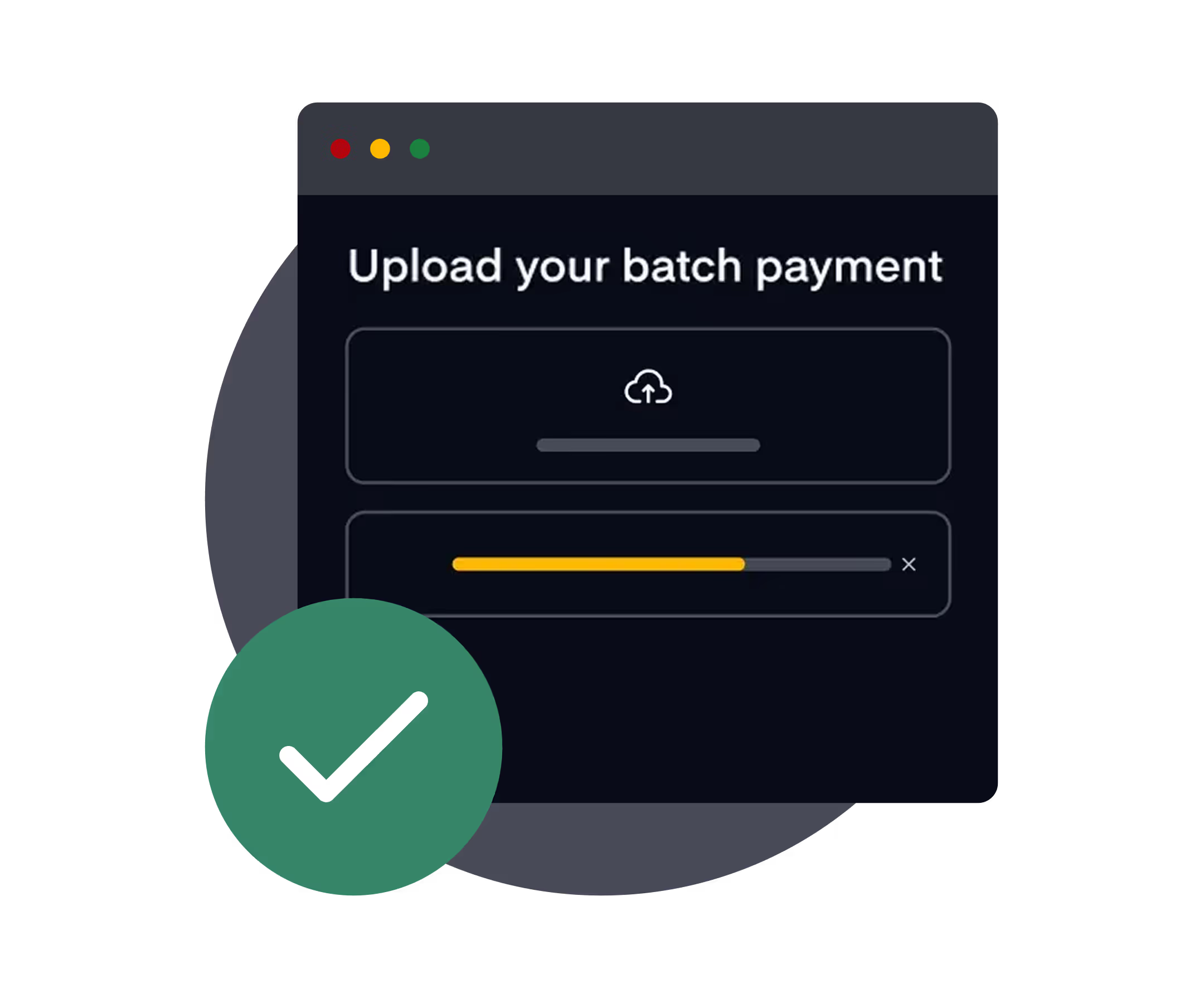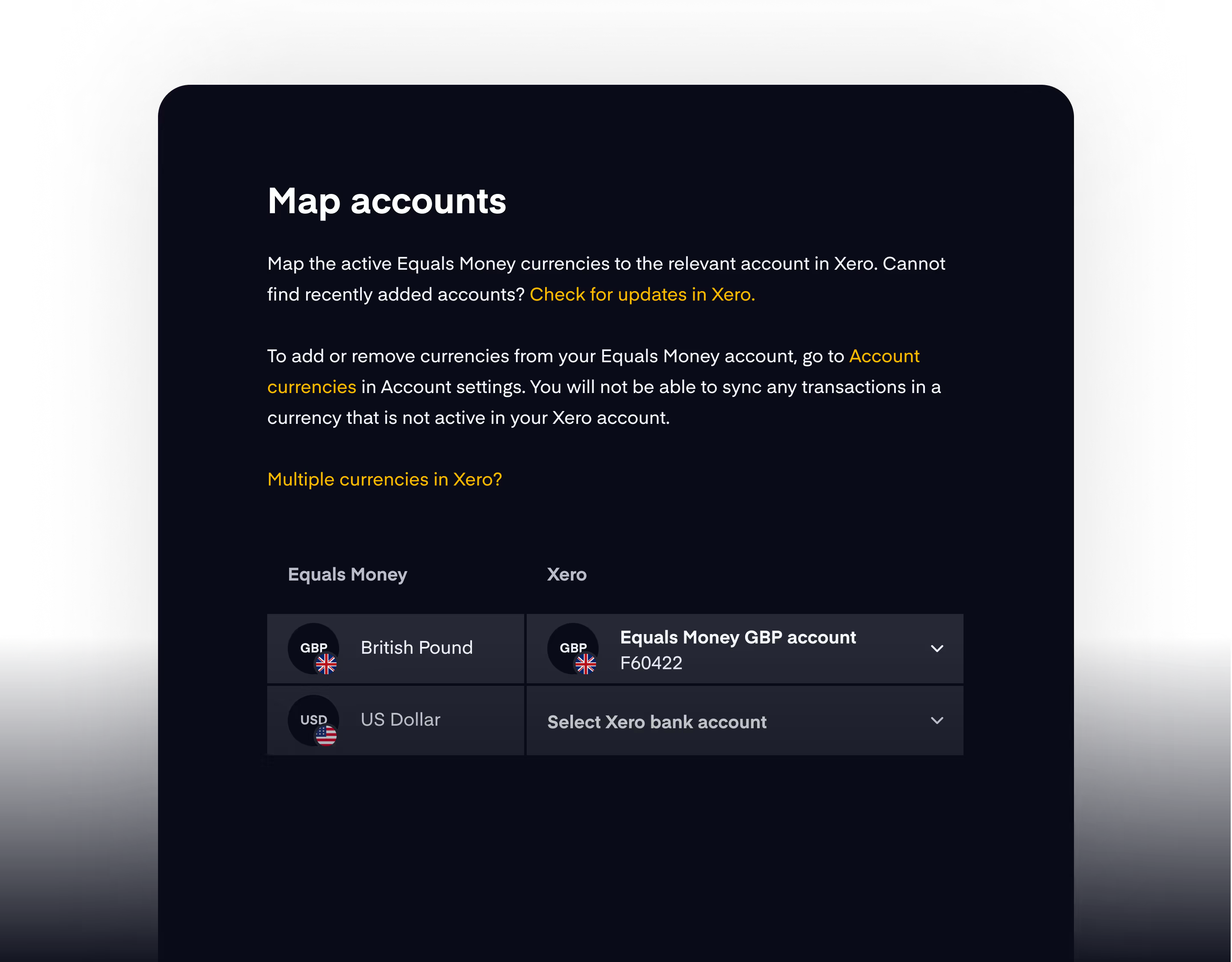ZAR
The South African rand (ZAR) is one of the most actively traded emerging market currencies in the world, playing a vital role in global finance and foreign exchange (FX) markets.
As the official currency of South Africa, the rand serves as a key barometer for investor sentiment toward not only the South African economy but also the broader African continent. Its performance is closely linked to commodity prices, especially gold and platinum, as South Africa is a leading exporter of these resources. Due to its relatively high liquidity among emerging market currencies and its sensitivity to global risk appetite, the ZAR is widely used by traders and investors as a proxy for emerging market risk. Consequently, the South African rand features prominently in forex trading strategies, particularly in high-volatility environments where potential returns are magnified.
Yes, you can make purchases in ZAR using an Equals Money card.
Equals Money cards support 21 global currencies (including ZAR), allowing you to make local currency purchases in South Africa. However, your card balance must include the required amount in ZAR.

.png)
Yes, you can receive payments in ZAR using an Equals Money account.
Equals Money accounts are equipped with a multi-currency IBAN, allowing you to receive payments and manage funds in 38 global currencies (including ZAR), without the need for currency conversion.

Yes, you can make payments in ZAR using an Equals Money account.
Equals Money allows outbound wire payments in 61 global currencies (including ZAR). Read more on how to make an online payment here.
If you're an existing payments customer and do not have access to an online account, please speak to your account manager or get in touch with our team.

Yes, you can make bulk payments in ZAR using an Equals Money account.
Equals Money allows bulk (batch) payments in 35 global currencies (including ZAR).

South African currency history and evolution
The South African rand has a rich and complex history that mirrors the country’s political and economic evolution.
The South African pound
The rand was officially introduced on 14 February 1961, replacing the South African pound. This change coincided with South Africa's transition to a republic, following its withdrawal from British occupation and the Commonwealth of Nations. As mentioned, prior to this, South Africa had used the South African pound, which was pegged to the British pound sterling and divided into shillings and pence, following the British £sd (pre-decimal) system.
The introduction of the rand
The move to the rand introduced a decimalized system, simplifying calculations and aligning with global trends towards decimalisation. The conversion or exchange rate was set at 1 South African pound = 2 South African rand, meaning 1 rand was equivalent to 10 shillings. This change made transactions and pricing more straightforward for businesses and consumers alike within the South African economy.
Initially, the rand was relatively strong, valued higher than the US dollar. However, over subsequent decades, political developments, economic sanctions during apartheid, and fluctuating commodity prices contributed to its depreciation. Nonetheless, the rand has remained the official South African currency since 1961, symbolising both the country’s complex history and its position in the global financial system.
Initially, the rand was relatively strong, valued higher than the US dollar, reflecting the country's economic strength based on mining and exports. However, the rand's value began to deteriorate through the 1970s and 1980s, largely due to international sanctions imposed during the apartheid era, political instability, and fluctuating gold prices. By the 1990s, the end of apartheid and the shift to democracy led to further volatility as the economy opened up to global markets.
Since then, the rand has remained an important emerging market currency, sensitive to global commodity prices, domestic political developments, and shifts in investor sentiment. The rand is also a proxy currency for broader African market risk, making it significant beyond South Africa’s borders.
Understanding the currency symbol for the South African rand
The currency symbol for the South African rand is simply "R", comparable to the "$" for the US dollar or "£" for the British pound sterling.
This symbol is used to denote prices and amounts in rand, for example R50 for fifty rand.
Interestingly, while the symbol is straightforward domestically, international traders and financial institutions often accompany it with the ISO code (ZAR) to distinguish it from other currencies that might use the letter "R" informally, ensuring clarity in global finance, cross-border payments, and International transfers.
ZAR: the ISO code for the South African rand and what it means
In the international monetary system, the South African rand is identified by the ISO currency code "ZAR". This abbreviation stands for "Zuid-Afrikaanse Rand," the Dutch translation of South African Rand, reflecting the historical influence of Dutch settlers and the Afrikaans language in the region.
The ISO code ZAR is crucial for banking, international money transfers, foreign exchange transactions, and financial reporting. It provides a standardised reference for the rand, ensuring that it is unmistakably identified in global markets.
The South African Reserve Bank: central bank of the rand
The South African Reserve Bank (SARB) is the nation's central bank and the sole issuer of the South African rand.
Established in 1921, it is Africa’s oldest central bank and plays a pivotal role in managing monetary policy, controlling inflation, and maintaining the stability of the South African currency. SARB’s mandates include price stability, promoting balanced and sustainable economic growth, and overseeing the country’s payment systems.
SARB also manages South Africa’s foreign exchange reserves, intervenes in currency markets when necessary, and sets the repo rate, which influences borrowing costs across the economy. The central bank operates with a high degree of autonomy, although its decisions are closely watched for their impact on the value of the rand in global markets.
Complete guide to South African currency denominations: rand coins and notes
The South African rand is issued in both banknotes and coins, catering to various transaction needs within the economy. The current range of South African rand banknotes includes:
- R10 — Typically green, featuring Nelson Mandela
- R20 — Orange with Mandela’s portrait
- R50 — Red with Mandela
- R100 — Blue
- R200 — Purple
These notes not only showcase Nelson Mandela, South Africa's first democratically elected president, but also include illustrations of the Big Five wildlife ( lion, leopard, rhinoceros, elephant, and buffalo) on the reverse, symbolising the country's rich biodiversity.
The decimal coinage in circulation:
- 10 cents
- 20 cents
- 50 cents
- R1 (1 rand)
- R2 (2 rand)
- R5 (5 rand)
Understanding the rand's subunit: the cent
The South African rand is subdivided into 100 cents, much like the US dollar is split into 100 cents.
The cent denominations include 10c, 20c, and 50c coins, although lower-value coins like 1c and 2c have been discontinued due to inflation making them economically impractical.
In everyday transactions, pricing is often rounded to the nearest 5 or 10 cents, reflecting the reduced use of smaller cent coins. Nonetheless, the cent remains an important conceptual part of the South African currency system, especially for accounting, pricing, and financial documentation.
South African rand: official name, abbreviations, and slang terms
The official designation of the South African currency is the South African rand, with the term "rand" being widely used in both formal and informal settings. In financial markets and when referencing exchange rates, the rand is often referred to by its ISO currency code, ZAR.
The name "rand" is derived from the Witwatersrand, a ridge in the Johannesburg area famed for its rich gold deposits, which had long been the backbone of the South African economy. This not only rooted the currency in a key element of the nation’s wealth but also marked a shift in national identity, moving away from colonial monetary ties.
Locally, the rand has inspired various nicknames and colloquial terms, though not as widely standardised as in other currencies. Common expressions include:
- "bucks" — e.g., "fifty bucks" for R50
- "bob" — occasionally used for small rand amounts, borrowed from British slang
- "fiver" or "tenner" — for R5 and R10 respectively, mimicking UK currency slang
These nicknames are generally understood within South Africa, adding a cultural flavour to the everyday use of the currency.
Top forex pairs involving the South African rand (ZAR)
The rand is one of the most actively traded emerging market currencies, prized for its liquidity and volatility. This makes it a favourite among forex traders seeking opportunities in dynamic and high-yield environments.
The most commonly traded ZAR currency pairs include:
- USD/ZAR — The US dollar to South African rand pair is the most liquid and widely traded, influenced by global risk sentiment, international pressures, commodity prices (especially gold and platinum), and US economic policy.
- EUR/ZAR — Euro to rand trading reflects economic ties between South Africa and the European Union, its largest trading partner.
- GBP/ZAR — This pair tracks the relationship between the British pound sterling and South African rand, reflecting historic ties and ongoing trade relationships.
- AUD/ZAR — With both Australia and South Africa being resource-rich countries, the Australian dollar to South African rand pair is influenced by commodity markets and regional economic trends.
- JPY/ZAR — This less common but still significant pair is often traded by those looking to arbitrage between emerging market risk and the Japanese yen, a traditional safe-haven currency.
These forex pairs are actively monitored by traders due to the rand’s sensitivity to domestic politics, economic policies, and global commodity prices, particularly gold, platinum, and palladium.
















